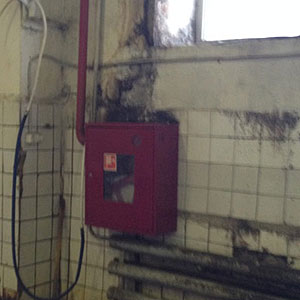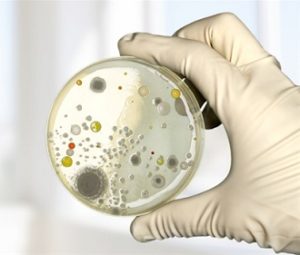Insects and molds cause defects in substratum and reduced yields of oyster mushrooms.
The most effective way to deal with midges, mosquitoes, mold in mushroom production is an integrated approach, but not only chemicals.
All rooms must be plastered, window frames, doors and doorways repaired so that there are no gaps. Insects and mold spores breed in these places.
There is no need to paste over the walls with insulating materials with foil - condensation collects between this material and the walls and mold multiplies. Disinfection with fungicides does not help in this case.
Mold does not live in the grow room, even at high humidity, if the ventilation creates good air exchange.
There is no need to use chemistry "just in case" (as a precaution). It is harmful to people's health and to the operation of the enterprise.
Frequent treatments kill weak strains of microorganisms and those that do not interfere with the development of oyster mushroom mycelium. Aggressive strains of mold come to this free space and compete with oyster mushrooms. Because of this, mold spores enter the substrate and oyster mushroom mycelium cannot colonize it.
That is, the unreasonable use of disinfection leads to the opposite result.
A 40% solution of formaldehyde in water containing 8% methyl alcohol is called formalin.
I believe that it is not acceptable to use formalin in the production of oyster mushrooms.
Firstly, oyster mushrooms, unlike champignon, are practically not affected by mold fungi.
Secondly, it is too poisonous and causes many long-term side effects. What does "remote effect" mean? If you get sick with allergies, bronchitis or skin rashes six months after using formalin, you are unlikely to attribute this to the fact that you once worked with formalin.
In addition, it has a carcinogenic effect. This does not mean that you will instantly get cancer. But if you work with formaldehyde from year to year, there is an accumulation of poison in the body, and the immune system can not stand it.
If you disinfect once a season, there will be no mold in the growing chamber.
 Disinfectants not only kill molds, but unlike fungicides, they also destroy many types of viruses and bacteria.
Disinfectants not only kill molds, but unlike fungicides, they also destroy many types of viruses and bacteria.
These preparations are not addictive to microorganisms. Many of them are also active against spores.
It is necessary to select chemicals that are non-toxic or low-toxic for people, since the processing takes place in closed rooms.
For the treatment of all premises, chemical preparations containing one of the active substances are used:
You can also use the VIROCID disinfectant.
You can find the name of the drug that is produced in your country by the active ingredient listed above.
Disinfectants are used to treat the ventilation system, filter, air ducts by aerosol spray.
To do this, the ventilation system is turned on for full recirculation, the exhaust fan is turned off. Diluted according to the instructions, the substance is introduced into the water supply system for humidification. This system must be built into the ventilation system.
If you use a different method of moisturizing, the diluted preparation can be sprayed near the recirculation hole with the ventilation turned on.
Use a gas mask and chemical protection suit!
Consider sequentially all production areas and the need for their disinfection.
 reat walls, floors, all equipment in the inoculation room before each inoculation.
reat walls, floors, all equipment in the inoculation room before each inoculation.If you follow all the above recommendations, and you have no problems with mold and insects at your enterprise, it is enough to disinfect the premises once a season.
You can combine minor annual repairs with disinfection in the summer.
Every two or three seasons, be sure to change the polyethylene air ducts.
It does not make sense to use foundationazole, and other anti-mold products with benomyl during heat treatment of the substrate. Since they decompose in an alkaline environment.
